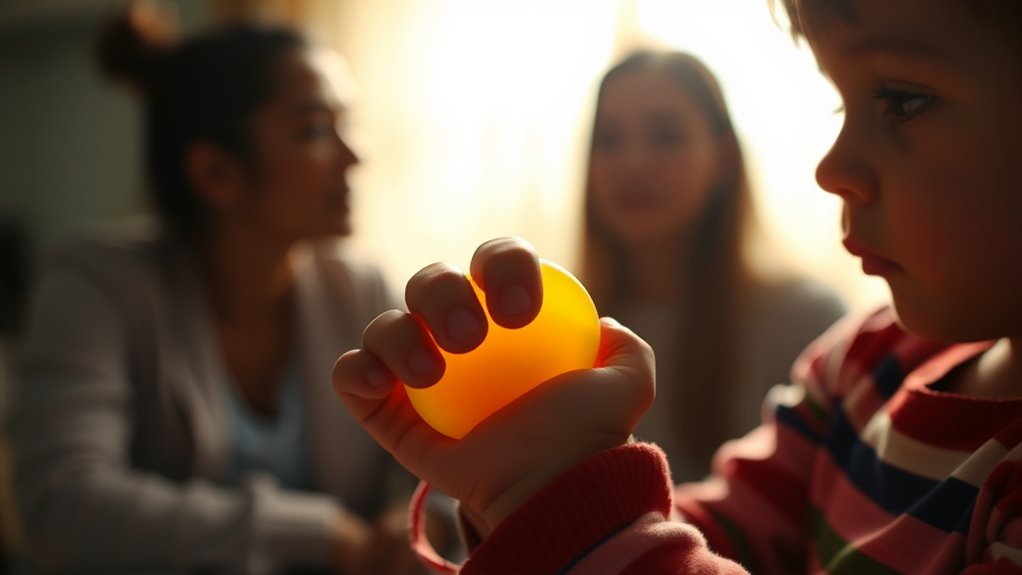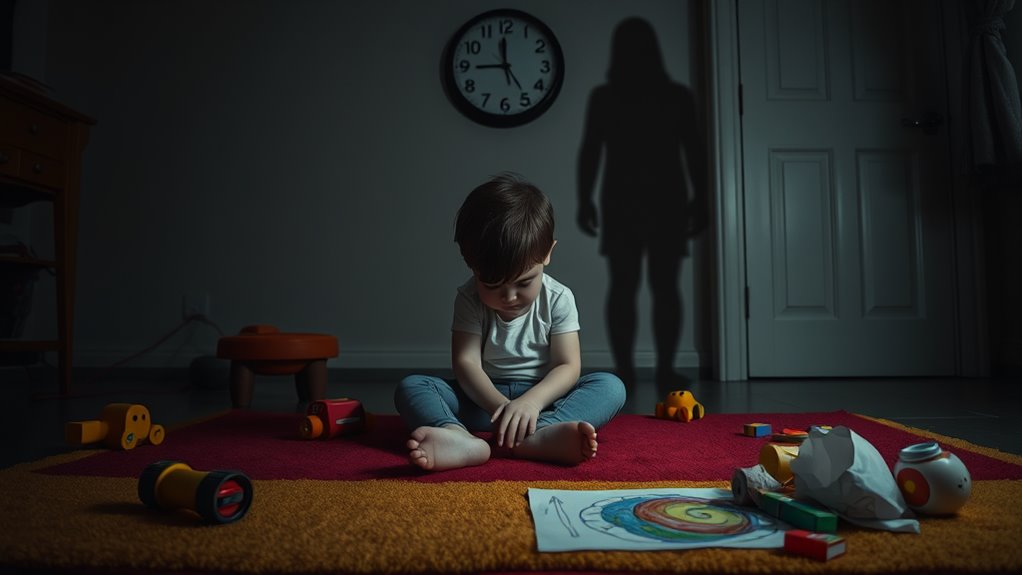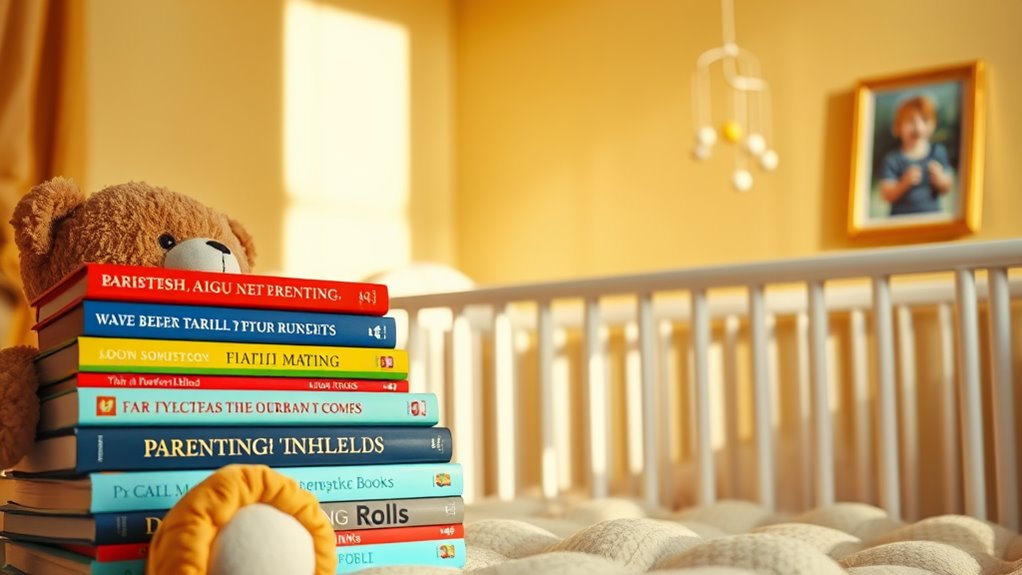Teaching emotional regulation to young children is super important for their growth! You can start by helping them recognize their feelings, using fun tools like emotion cards or storytime discussions. Encourage deep breathing techniques to calm down when emotions run high. Creating a cool-down corner gives them a special spot to regroup. Make it a game—everyone loves games! It’s also key to model healthy emotional behaviors yourself. Celebrate their little victories to boost their confidence! If you want to uncover some more engaging tips and tricks, just stick around for a bit longer—there’s so much more to explore!
Understanding Emotional Regulation
Emotional regulation is like an essential skill that helps young children manage their feelings effectively. Imagine you’re a kid who just lost your favorite toy. You might feel sad, angry, or even confused. But what if you could learn to express those feelings without throwing a tantrum? That’s where emotional regulation comes into play!
Understanding emotional regulation means knowing how to recognize your feelings and figuring out how to deal with them. It’s like having a toolbox full of strategies to help you feel better when things get tough. For example, if you’re feeling overwhelmed, you could take deep breaths, count to ten, or talk to a friend about it.
You might also notice that it’s okay to feel upset sometimes. Everyone does! What’s important is learning how to calm down and move on.
Think of it as a superhero power that helps you handle life’s little challenges. With practice, you can transform those big feelings into manageable ones. So, the next time you feel like a volcano ready to erupt, remember, you’ve got the tools to keep it cool!
The Importance of Emotional Intelligence
Developing emotional intelligence is essential for young children’s overall growth and well-being. When kids learn to understand their feelings and the feelings of others, they build strong foundations for their future relationships.
Imagine a world where children can recognize when they’re upset and know how to calm themselves down—sounds great, right?
Emotional intelligence helps kids navigate social situations like a pro. They learn to empathize with friends, resolve conflicts, and even share their toys without a meltdown.
Plus, it boosts their confidence! When children can express their emotions clearly, they feel more secure in their friendships and interactions.
Now, let’s not forget about school. Kids with high emotional intelligence often perform better academically. They’re more focused and can handle stress like a champ.
It’s like having a superpower that keeps them motivated and engaged.
Strategies for Teaching Emotional Awareness
While teaching young children to recognize their emotions can feel challenging, employing effective strategies can make the process engaging and rewarding. Start by using simple language and relatable examples. For instance, when a child feels sad, you could say, “It’s like when your ice cream falls off the cone!” This helps them connect feelings to real-life situations.
Another fun strategy is to use emotion cards. You can create or buy cards that display different facial expressions. Have them identify the emotion on each card and share a time they felt that way. This turns a serious topic into a playful game.
Storytime is also a fantastic way to teach emotional awareness. Choose books where characters experience various feelings. After reading, ask questions like, “How do you think that character felt?” This encourages kids to think about emotions in a narrative context.
Lastly, don’t forget to model emotional awareness yourself. Let them see you express feelings and talk about them. When they witness you sharing, it’ll inspire them to do the same.
With these strategies, you’re on your way to helping kids become more emotionally aware and expressive!
Techniques for Managing Emotions
To help young children manage their emotions effectively, incorporating practical techniques into everyday situations can make a significant difference. One great technique is teaching them to take deep breaths. When emotions run high, remind them to inhale slowly through their nose and exhale through their mouth. It’s like blowing out birthday candles, just without the cake!
Another helpful strategy is using a feelings chart. Create a colorful chart with different faces showing various emotions. When your child feels upset or angry, encourage them to point to the face that matches their feelings. This way, they start identifying their emotions and can express themselves better.
You can also introduce “cool-down” corners. Set up a cozy spot with soft pillows and calming toys where they can go when they need a break. It’s their special place to regroup and chill out, like a mini-vacation from their feelings!
Lastly, model emotional regulation yourself. When you face frustration or sadness, show them how you manage those feelings. Your actions speak volumes, and kids learn best by watching you.
With these techniques, you’ll be setting your child up for success in handling their emotions!
Activities to Foster Emotional Skills
Engaging your child in fun activities can greatly enhance their emotional skills. One fantastic way to do this is through role-playing games. You can create scenarios where your child has to express different emotions, like joy, sadness, or frustration. It’s a great way for them to practice recognizing and naming feelings.
Another fun activity is the “Feelings Charades” game. You and your child take turns acting out various emotions without using words while the other guesses what it is. It’s not only hilarious but also helps them understand non-verbal cues!
You might also consider using art to express emotions. Set up a space with paper and colors, and encourage your child to draw how they feel about a certain situation. This gives them a creative outlet and makes discussing feelings easier.
Finally, reading books about emotions can open up discussions. After reading, ask your child how the characters might feel and why. This helps them connect their own experiences to what they read.
Supporting Emotional Development at Home
Creating a nurturing environment at home is essential for supporting your child’s emotional development. You can do this by encouraging open conversations about feelings. When your child talks about their emotions, listen actively and validate what they’re feeling. You might say, “It’s okay to feel sad sometimes,” or “I understand you’re frustrated.” This helps them know it’s normal to have strong emotions.
Another way to support emotional growth is by modeling healthy coping strategies. Show them how you deal with stress, whether it’s taking deep breaths, going for a walk, or talking with a friend. Kids are like little sponges, soaking up everything they see, so your actions matter.
Don’t forget to create a routine. Kids thrive on predictability, and having a consistent schedule can help them feel secure. Incorporate fun activities together, like reading a book or playing games. This can be a great way to bond and create a safe space for emotions.
Lastly, remember to celebrate their successes, big or small. A simple “I’m proud of you!” goes a long way. With your love and support, your child will learn to navigate their emotions like a pro!





